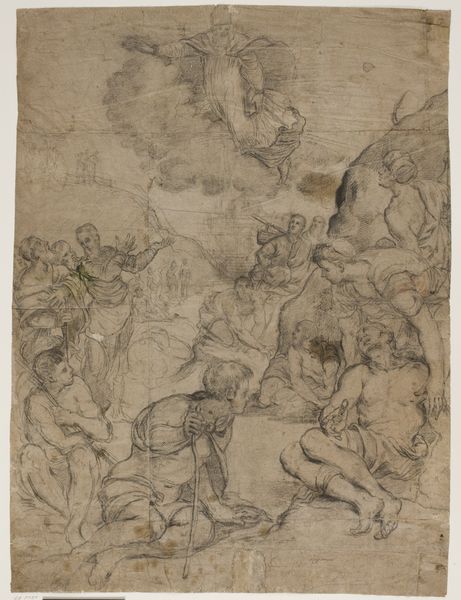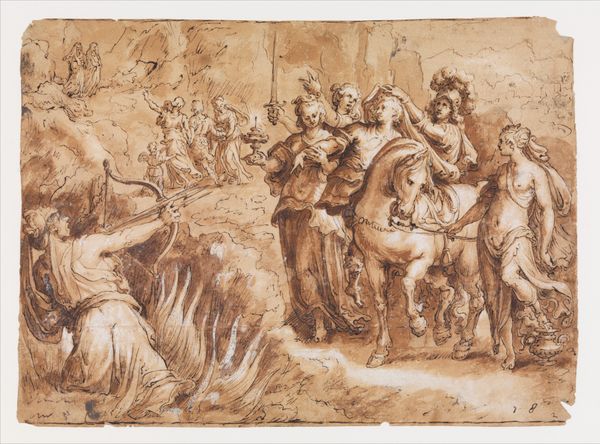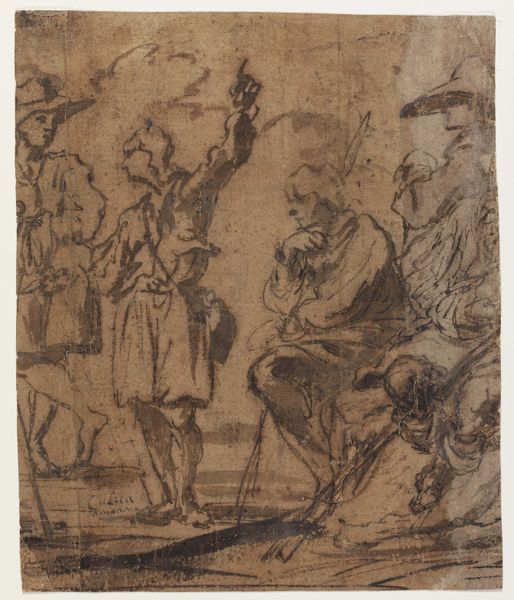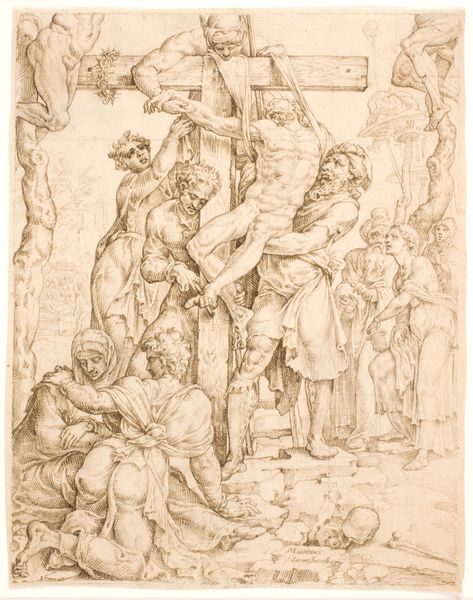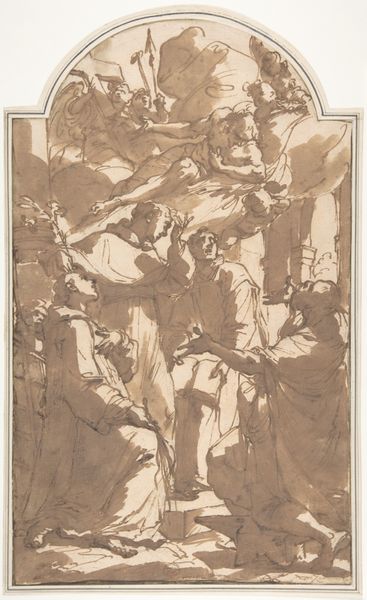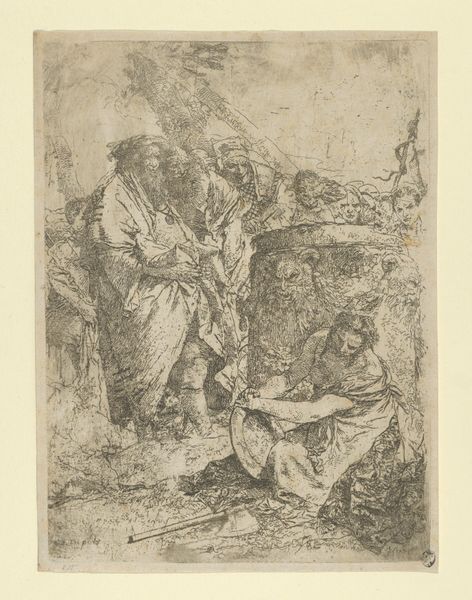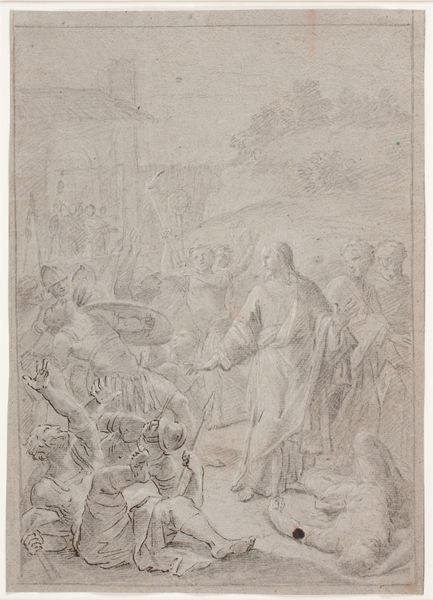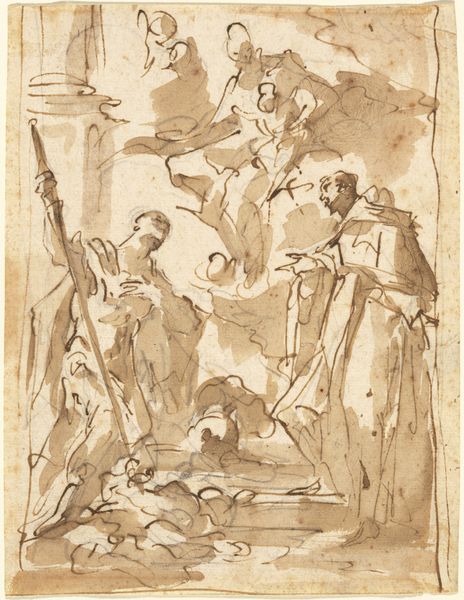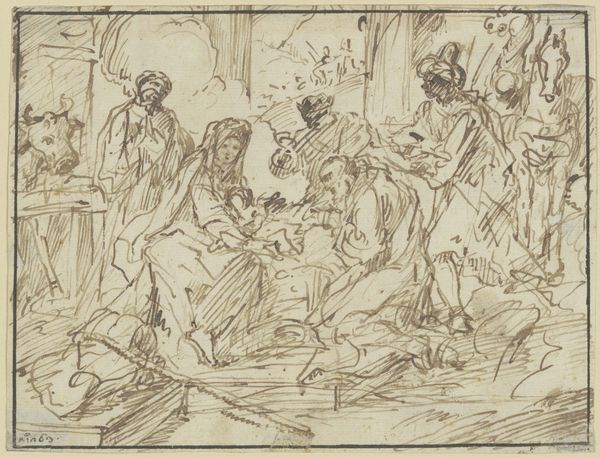
The Presentation of the Virgin in the Temple (recto); Another Design for the Same Composition (verso) 1612 - 1650
0:00
0:00
drawing, tempera, ink
#
drawing
#
ink painting
#
tempera
#
charcoal drawing
#
figuration
#
11_renaissance
#
ink
#
history-painting
#
italian-renaissance
#
virgin-mary
#
miniature
Dimensions: 14 7/16 x 10 5/16in. (36.7 x 26.2cm)
Copyright: Public Domain
Editor: We’re looking at "The Presentation of the Virgin in the Temple" by Pietro Testa, created sometime between 1612 and 1650. It's a drawing with ink and tempera, and it feels very… layered, almost like a dream. There are so many figures! What catches your eye in this piece? Curator: Immediately, I’m drawn to the potent symbolism. The temple, a sacred space, becomes a stage for the unfolding narrative. The figures—note the angels above, and the elders gathered—aren’t simply characters; they represent complex societal and religious structures. Look at how the virgin is positioned in the middle; would you consider it the intersection of earthly and divine power? Editor: I think so. She's the focal point, but surrounded by these imposing figures. Is the layering also symbolic? Curator: Precisely. Testa uses layering to create depth, not just in a visual sense, but also to evoke layers of meaning. The virgin’s presentation isn’t just a historical event; it's an allegory for faith, tradition, and the sacred feminine. What feelings arise when considering those figures behind her? Editor: They seem to emphasize the importance of lineage, almost like they're witnesses ensuring tradition is upheld. And is that a sacrifice, a bull at the bottom? Curator: Excellent observation. Yes, that's a sacrificial offering, deeply rooted in ancient traditions, predating Christianity yet integrated into this Christian narrative. The artist shows cultural memory at work, doesn't he? Consider the emotional weight these symbols carried. How do they inform our understanding of the scene and its context? Editor: I’m starting to see it as more than just a historical depiction; it's about how cultural memory shapes religious narratives. It is interesting to see an amalgamation of different religious iconographies as well as of social mores. Curator: Exactly. Testa invites us to contemplate how symbols evolve and retain their power across time, constantly adding to their history and to ours. Editor: This has completely changed how I see the drawing. Thanks for showing me the rich symbology within this piece!
Comments
No comments
Be the first to comment and join the conversation on the ultimate creative platform.


